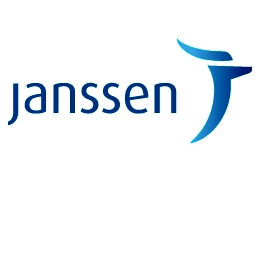预约演示
更新于:2025-05-07
C14DM
更新于:2025-05-07
基本信息
别名- |
简介- |
关联
1
项与 C14DM 相关的药物靶点 |
作用机制 C14DM拮抗剂 [+1] |
最高研发阶段批准上市 |
首次获批国家/地区 美国 |
首次获批日期1981-06-12 |
177
项与 C14DM 相关的临床试验CTRI/2024/10/074823
A COMPARATIVE CLINICAL STUDY ON TUVARAK TAILA CREAM AND 2 PERCENT TOPICAL KETOCONAZOLE IN THE MANAGEMENT OF SIDHMA KUSHTHA (PITYRIASIS VERSICOLOR) IN CHILDREN- AN OPEN LABELLED RANDOMIZED CONTROLLED CLINICAL TRIAL - NIL
开始日期2025-05-01 |
申办/合作机构- |
IRCT20241028063523N4
Comparative efficacy of combined treatment with ketoconazole 2% cream and adapalene 0.1% gel versus ketoconazole 2% cream monotherapy in pityriasis versicolor.
开始日期2024-11-19 |
申办/合作机构- |
CTRI/2024/10/074571
Randomized controlled clinical trial to evaluate the efficacy of Somraji Taila in DadruKushtha (Dermatophytosis) in children - NIL
开始日期2024-10-10 |
申办/合作机构- |
100 项与 C14DM 相关的临床结果
登录后查看更多信息
100 项与 C14DM 相关的转化医学
登录后查看更多信息
0 项与 C14DM 相关的专利(医药)
登录后查看更多信息
182
项与 C14DM 相关的文献(医药)2025-05-01·Antonie van Leeuwenhoek
Azole resistance: patterns of amino acid substitutions in Candida sterol 14α-demethylase
Article
作者: Ghate, Sudeep D ; Rao, R Shyama Prasad ; Sashindran, V K ; Pinto, Larina ; Suravajhala, Prashanth ; Dakal, Tikam Chand ; Shastry, Rajesh P
2025-02-25·ACS Omega
QSAR, Antimicrobial, and Antiproliferative Study of (R/S)-2-Thioxo-3,4-dihydropyrimidine-5-carboxanilides
Article
作者: Kandukuri, Nagesh Kumar ; Nandi, Arijit ; Das, Anwesha ; Kashyap, Shreya ; Banerjee, Sourav ; Patel, Chirag D. ; Bhalodiya, Savan S. ; Arumugam, Madan Kumar ; Khan, Adam N. ; Patel, Hitendra M. ; Padrón, José M. ; González-Bakker, Aday ; Balachandran, Shana ; Vala, Disha P. ; Parmar, Mehul P.
2024-12-11·Journal of Agricultural and Food Chemistry
Design, Synthesis, and Assessment of Fungicidal Activity of Active Substructure 1,2,4-Triazole Containing Coumarin
Article
作者: Yu, Zhenwu ; Deng, Yuxuan ; Fan, Zhijin ; Chen, Angkun ; Tang, Liangfu ; Li, Kun ; Wu, Rongzhang ; Lei, Liu ; Tian, Ruixi ; Lv, You
2
项与 C14DM 相关的新闻(医药)2024-07-10
ESTEVE has completed the acquisition of HRA Pharma Rare Diseases, a business specialized in rare diseases, from Perrigo Company plc. With this acquisition, ESTEVE expands its portfolio in rare and severe diseases adding, to the current existing offer, three new medications to treat Cushing's syndrome and adrenocortical carcinoma: Metopirone, Lysodren, and Ketoconazole HRA. HRA Pharma Rare Diseases has been a leading company for over 15 years in rare and severe diseases, providing the best care and services to individuals living with rare diseases, and is committed to supporting healthcare professionals worldwide. "This acquisition allows us to accelerate our international expansion, strengthening our global presence and ability to better address unmet needs, thus improving the lives of more people," highlights Staffan Schüberg, Chief Executive Officer of ESTEVE. With annual net revenues in 2023 of approximately 50 million euros, HRA Pharma Rare Diseases has a presence in numerous European countries and the United States with a team of 49 individuals. This agreement represents an investment of up to 275 million euros, structured with an initial fixed contribution and future variable payments tied to revenue.
Share
并购
2024-04-24
ESTEVE has signed a binding offer with Perrigo Company plc to acquire Perrigo's HRA Pharma Rare Diseases, a business specialized in rare and ultra-rare diseases, following the information and consultation process with HRA Pharma Works Council in France and subject to the satisfaction of customary closing conditions, including receipt of regulatory approvals. ESTEVE will increase its portfolio in the rare and severe diseases therapeutic area, adding to its current portfolio three new medicines that address Cushing's syndrome and Adrenocortical Carcinoma: Metopirone, Lysodren, and Ketoconazole HRA. HRA Pharma Rare Diseases has over 15 years' experience in rare and ultra-rare diseases and is dedicated to bringing the best care and services to people living with rare diseases and committed to supporting healthcare professionals all over the world. With annual Net Revenues in 2023 around €50M, the HRA Pharma Rare Diseases business has a presence in several European countries as well as in the US. "This transaction aims to advance ESTEVE on the path of covering the unmet patients' needs, in line with ESTEVE's purpose of improving people's lives and is another step towards the company's vision of being an international specialty pharma company", concludes Staffan Schüberg, Chief Executive Officer of ESTEVE. Patrick Lockwood-Taylor, Perrigo's President and Chief Executive Officer, states: "We are pleased that ESTEVE, with its track record of growth and international footprint, will look to increase global access to these effective treatment options for all those patients in need". The binding offer is for up to €275 million, consisting of an upfront payment and potential earnout payments. The closing of the transaction should take place during the third quarter of 2024, following the required works council consultation and subject to customary regulatory approvals. Perella Weinberg Partners and Clifford Chance served as ESTEVE's lead advisors on this transaction. Morgan Stanley & Co. LLC and Wachtell, Lipton, Rosen & Katz served as Perrigo's lead advisors on this transaction.
分析
对领域进行一次全面的分析。
登录
或

生物医药百科问答
全新生物医药AI Agent 覆盖科研全链路,让突破性发现快人一步
立即开始免费试用!
智慧芽新药情报库是智慧芽专为生命科学人士构建的基于AI的创新药情报平台,助您全方位提升您的研发与决策效率。
立即开始数据试用!
智慧芽新药库数据也通过智慧芽数据服务平台,以API或者数据包形式对外开放,助您更加充分利用智慧芽新药情报信息。
生物序列数据库
生物药研发创新
免费使用
化学结构数据库
小分子化药研发创新
免费使用

